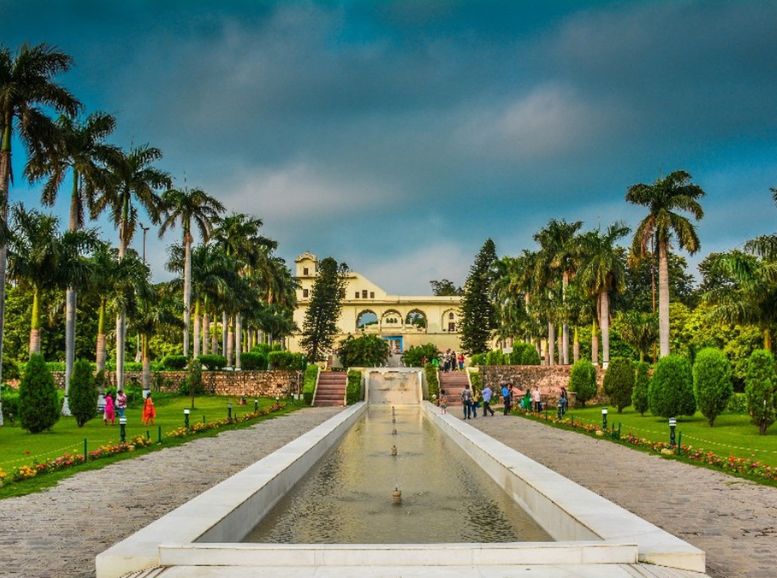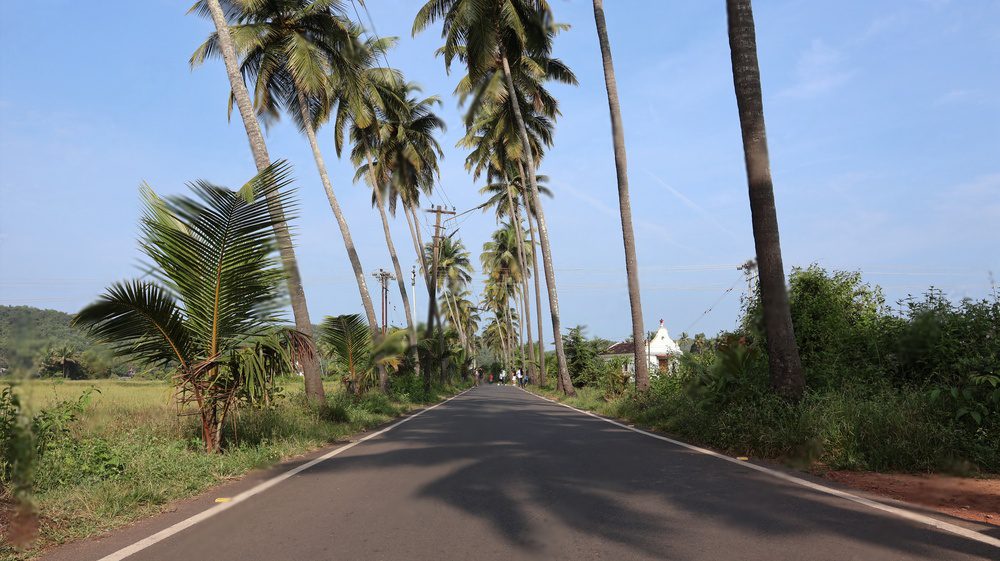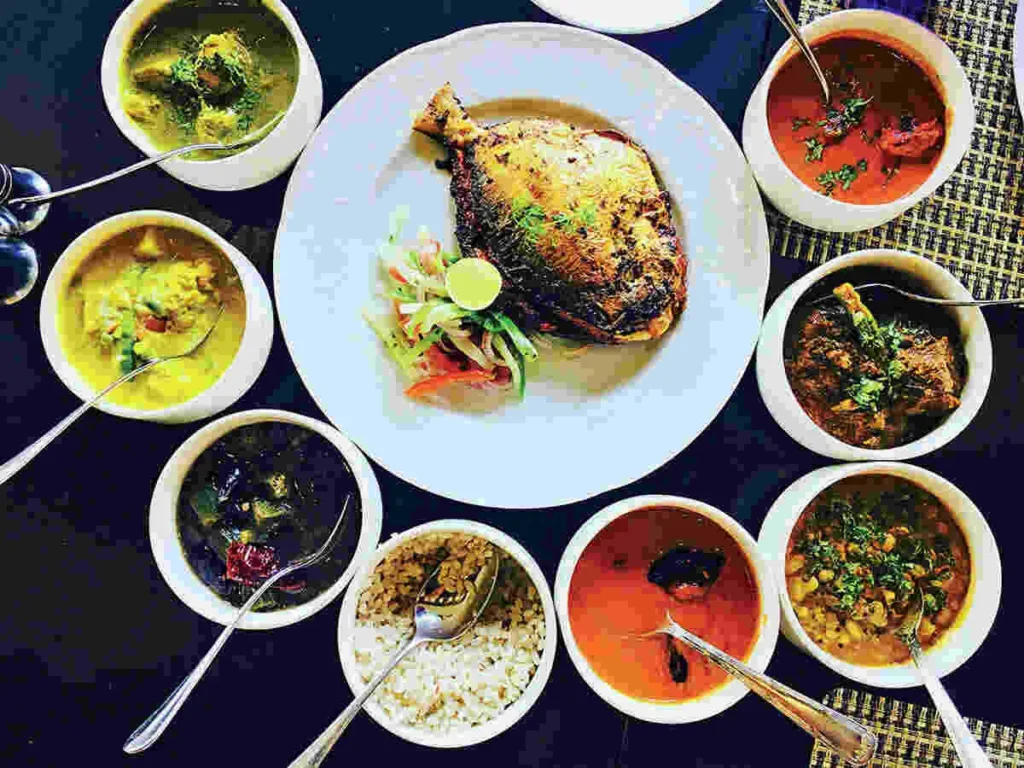In the verdant foothills of the Shivalik Range, Haryana, India, lies Pinjore Gardens, a haven of tranquility and historical significance. Known also as Yadavindra Gardens, this exquisite site showcases the enduring charm of Mughal-inspired architecture and meticulously landscaped grounds.
Exploring Pinjore Gardens feels like traveling through time. Each path and corner whispers stories of the past. Originally a retreat for Mughal rulers, it blossomed into a sprawling botanical paradise under the patronage of Maharaja Yadavindra Singh of Patiala. This captivating sanctuary has enthralled visitors for generations.
How to reach:
- Air: Chandigarh International Airport, 25 kilometers away, is the closest airport. Taxis and ride-hailing services are available for the onward journey.
- Train: Kalka Railway Station (14 kilometers distant) offers connections to major cities. Taxis or local buses can take you from the station to Pinjore Gardens.
- Road: Situated on the convenient Ambala-Shimla Highway (NH22), Pinjore Gardens is easily accessible by car, bus, or motorcycle. A drive from nearby Chandigarh or Panchkula takes less than an hour.
- Public Transport: Regular buses ply from Chandigarh, Panchkula, and Kalka to Pinjore Gardens. Look for buses towards Shimla or Solan and alight at the Pinjore Gardens stop.
Best time to visit:
For comfortable exploration, aim for Pinjore Gardens during the cooler months, generally from October to March. Temperatures range from a pleasant 10°C to 25°C (50°F to 77°F), making it ideal for strolling the gardens without battling the heat.
Winter offers its own perks. You’ll experience the gardens’ beauty without extreme temperatures, potentially encounter fewer crowds for a serene experience, and witness vibrant seasonal blooms amidst lush greenery. Plus, cooler weather is perfect for leisurely walks and picnics in the scenic setting.
Prefer a more private experience? Consider visiting on weekdays or early mornings throughout the year. Regardless of the season, checking the weather forecast before your trip ensures optimal conditions for your visit.
Attractions:
Mini Zoo: Pinjore Gardens


The gardens also house a mini zoo, a perfect spot for families and children. Here, visitors can encounter various species of birds and animals, fostering a connection with the natural world.
Historical Structures:
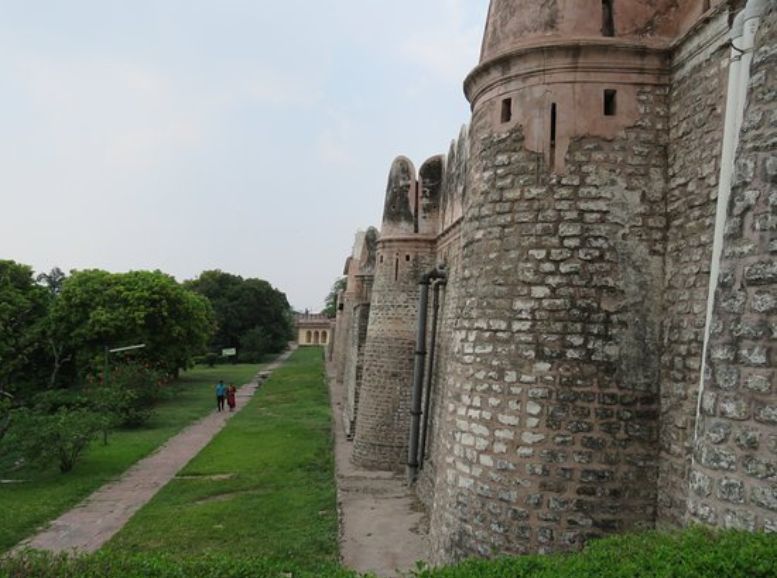

Beyond the main attractions, Pinjore Gardens is scattered with historical structures like gateways, pavilions, and tombs. Each serves as a silent sentinel, holding stories of a bygone era. Exploring these architectural gems offers a window into the region’s artistic heritage, enriching the cultural tapestry of the gardens.
Fountains and Waterfalls:
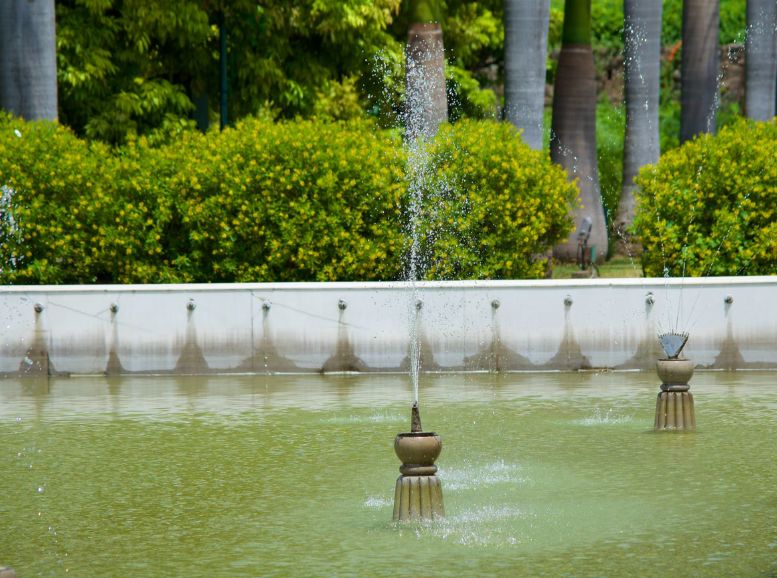

The gentle murmur of flowing water weaves through Pinjore Gardens, beckoning visitors to pause and savor the tranquility. Each meticulously crafted fountain and cascading waterfall adds a touch of grace to the landscaped vistas. Sunlight dances on the water’s surface, casting playful reflections that dance across the surroundings, creating a mesmerizing spectacle that captivates the senses. Imagine the cool mist of a fountain on a warm day, or the sparkling droplets glistening in the sunlight – a photographer’s dream.
Mughal-Inspired Architecture:
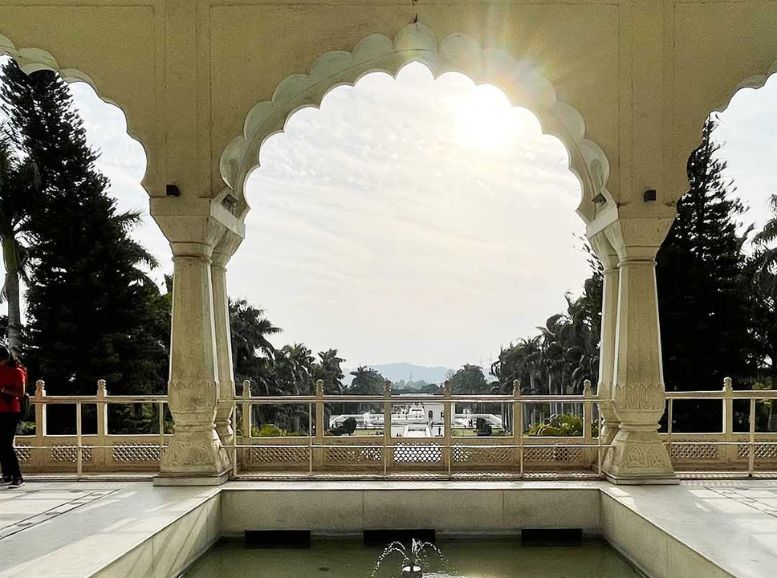

Pinjore Gardens showcases stunning Mughal-inspired architecture. Terraced levels, pavilions, fountains, and water channels all come together in a grand design reminiscent of Mughal aesthetics. This makes the gardens a delight for architecture lovers.
Local experiences:
- Culinary Delights: Savor local cuisine at nearby restaurants or street stalls. Sample classic dishes like chole bhature and rajma chawal, or explore regional specialties.
- Artisan Encounters: Delve into local craftsmanship at nearby workshops. Watch artisans create pottery, textiles, and woodcarvings. Some workshops even offer hands-on learning experiences.
- Cultural Immersions: Immerse yourself in the region’s cultural heritage with traditional dance performances, folk music concerts, or theatrical shows happening near the gardens (check for event schedules).
- Village Explorations: Embark on a guided village tour to experience rural life firsthand. Interact with locals, visit traditional homes, and learn about local customs and traditions.
- Shopping Spree: Browse local markets and bazaars for unique souvenirs like embroidered textiles, pottery, jewelry, and spices.
- Nature Escapes: Venture beyond the gardens and explore nearby parks, nature reserves, or scenic trails. Immerse yourself in the beauty of the surrounding countryside.
- Festival Fun: If your visit coincides with a local festival, don’t miss the chance to participate and experience the vibrant atmosphere. Celebrate regional traditions and culture.
- Culinary Education: Learn to prepare regional delicacies with a cooking class using local ingredients. It’s a fun way to deepen your understanding of local cuisine and cooking techniques.
Travel tips:
- Know Before You Go: Check Gardens’ opening hours to plan your visit effectively. Arriving early helps avoid crowds and maximizes exploration time.
- Comfortable Shoes: The gardens have extensive paths and terraces. Wear comfortable walking shoes for a pleasant experience.
- Stay Hydrated: Bring a water bottle, especially during hot weather. While drinking fountains are available, having your own supply is wise.
- Sun Protection: As the gardens are mainly outdoors, pack sunscreen, a hat, and sunglasses. Consider an umbrella or parasol for shade during peak sun hours.
- Respect the Environment: Dispose of waste responsibly in designated bins to maintain the gardens’ beauty.
- Capture Memories: Take photos, but be mindful of other visitors and photography restrictions.
- Learn More: Take advantage of informational signs and guided tours to delve deeper into the gardens’ history, architecture, and plant life. This enriches your experience.
- Relax and Explore: Allocate ample time to explore at your own pace, relax by the fountains, and soak in the tranquil atmosphere. Pack a picnic basket for a delightful outdoor meal.
- Respect Wildlife: You might encounter birds and squirrels. Enjoy watching them from afar and avoid disturbing them to preserve their habitat.
- Festival Fun: Check for any events, festivals, or celebrations during your visit. Participating can add another layer of enjoyment.
Conclusion
Pinjore Gardens promises a captivating journey through time, weaving together history, nature, and culture. Mughal-inspired architecture blends seamlessly with verdant terraces, offering a glimpse into a bygone era’s grandeur and the enduring beauty of nature. Explore intricate details and vibrant paintings within the Sheesh Mahal and Rang Mahal. Wander the symmetrical Mughal gardens, marveling at cascading fountains and colorful blooms. Immerse yourself in the tranquil ambiance, a haven from the everyday hustle. Beyond its architectural and natural wonders, Pinjore Gardens serves as a gateway to local experiences. Savor traditional cuisine, engage with artisans, and participate in cultural celebrations, enriching your understanding of the region’s heritage and fostering a connection with the local community. Plan your unforgettable visit today! For expert travel guidance and curated itineraries, visit Xplro.com, your one-stop shop for crafting the perfect travel experience.
FAQ
What are Pinjore Gardens?
- Pinjore Gardens, also known as Yadavindra Gardens, are historical gardens located in Pinjore, Haryana, India. They are renowned for their Mughal-inspired architecture, terraced layout, and lush greenery.
When were Pinjore Gardens built?
- Pinjore Gardens were built in the 17th century, during the reign of the Mughal emperor Aurangzeb. The construction was initiated by Nawab Fidai Khan, a governor of the region.
What is the significance of Pinjore Gardens?
- Pinjore Gardens hold historical and cultural significance as a well-preserved example of Mughal garden design. They showcase the fusion of Persian and Indian architectural styles and serve as a popular tourist destination.
What are the main attractions in Pinjore Gardens?
- The main attractions in Pinjore Gardens include the Sheesh Mahal (Palace of Mirrors), Rang Mahal (Painted Palace), Mughal Garden, fountains, waterfalls, and historical structures like gateways and pavilions.
What is the entry fee for Pinjore Gardens?
- The entry fee for Pinjore Gardens varies for Indian nationals and foreign tourists. There might also be separate fees for camera usage. It’s advisable to check the latest entry fee information before planning your visit.
Are there any guided tours available in Pinjore Gardens?
- Yes, guided tours are available in Pinjore Gardens, providing visitors with insights into the history, architecture, and botanical features of the gardens. These tours are usually conducted by knowledgeable guides.
What are the best times to visit Pinjore Gardens?
- The best time to visit Pinjore Gardens is during the cooler months, from October to March, when the weather is pleasant. However, the gardens are open year-round, and each season offers a unique experience.
Is photography allowed in Pinjore Gardens?
- Yes, photography is generally allowed in Pinjore Gardens for personal use. However, there might be restrictions on professional photography or commercial shoots. It’s advisable to inquire about any specific guidelines at the entrance.
Are there any facilities available for visitors in Pinjore Gardens?
- Yes, Pinjore Gardens offer various facilities for visitors, including restrooms, drinking water facilities, seating areas, and snack stalls. There might also be picnic spots where visitors can relax and enjoy meals.
Can we bring outside food into Pinjore Gardens?
- Outside food is usually allowed in Pinjore Gardens, making it convenient for visitors to enjoy picnics or snacks amidst the scenic surroundings. However, it’s essential to dispose of waste responsibly and maintain cleanliness.
Is Pinjore Gardens wheelchair accessible?
- Pinjore Gardens are relatively wheelchair accessible, with paved pathways and ramps in certain areas. However, some sections might have uneven terrain or steps, so it’s advisable to inquire about accessibility options beforehand.
Are there any accommodations near Pinjore Gardens?
- Yes, there are various accommodation options available near Pinjore Gardens, ranging from budget hotels to luxury resorts. Visitors can choose accommodations based on their preferences and budget, ensuring a comfortable stay during their visit.
